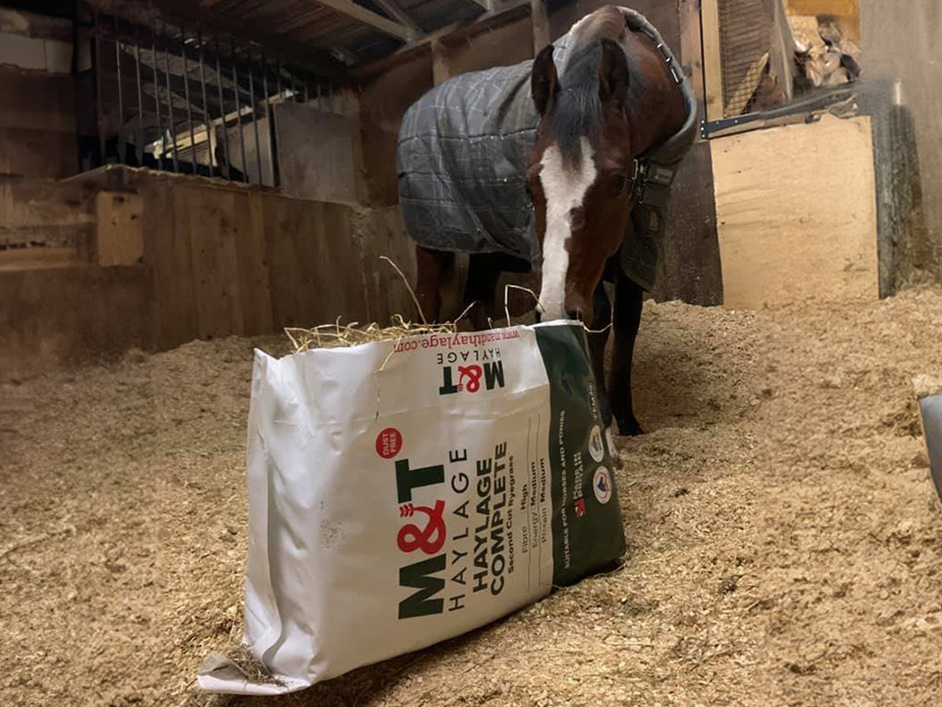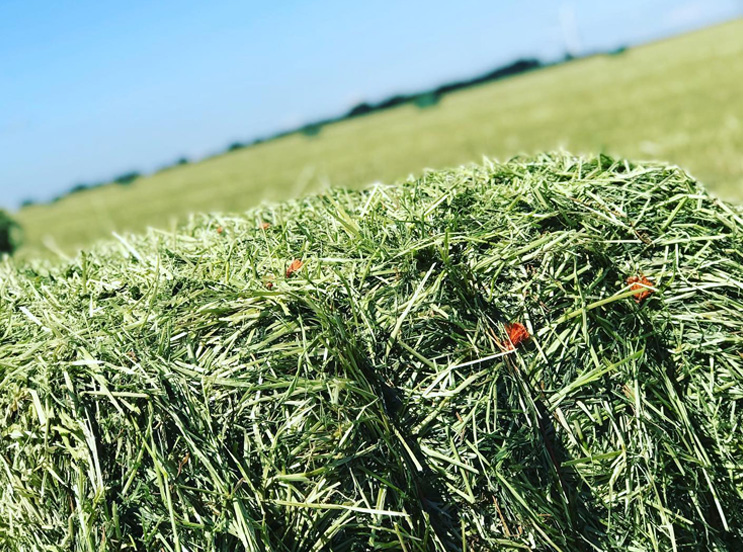
Our Knowledge

Why Choose M&T Haylage?
Since 2014, through continued development and investment, both in our team and grass products, we have perfected how to produce premium hay and haylage for a variety of different animals and markets.
At M&T, we are aware of the specific needs of both the horse and horse owner. Precautions are taken to reduce the risk of poisonous plants and foreign objects in our products. This is achieved through regular field walking, training of our staff, use of wide field margins and reseeding.
As all of our hay is homegrown, we have procedures in place which help to ensure that our products are the highest quality possible - with extra attention paid to ensure product consistency. We also go the extra mile by being NOPS accredited, which means we take every precaution to minimise the risk of Naturally Occurring Prohibited Substances within our products for customers competing under FEI and BHA rules. We are also FEMAS (Feed Materials Assurance Scheme) accredited which ensures that we follow the safety requirements needed in order to provide the UK market with our forage.
Our team can also provide you with the nutritional analysis for each of our products as well as advising you on the best forage to feed your horse. To request analysis of each of our products, get in touch with our team.
Enquire Here
Hay vs. Haylage
A misconception is that hay and haylage are the same, here are some frequently asked questions which may assist you in deciding which forage to feed your horse:
Hay is grass that is cut and left to dry before it is baled. It often (but not always) has a lower energy value than haylage and is 85% + dry matter. When it comes to hay choice, it is also worth considering whether the hay has been barn or field dried. Hay is conventionally made in the field, where the grass is left to dry before baling, however this is reliant on weather to have three consecutive dry days in order to dehydrate the hay sufficiently. Barn drying takes the variability of the weather out of the equation, by taking partially dried hay from the field and putting it into a large barn, heated by ground source heat pumps. It then stays here until it reaches a dry matter of more than 88%. This allows us at M&T Haylage to produce more consistent, high-quality hay.
All M&T hay products are dust extracted, producing a clean and palatable forage option for your horses and ponies.
Haylage might be described as a hybrid of hay and silage as it is grown and cut similarly to hay, but it is baled before it is dry and then bagged or wrapped much like silage. Due to this process, haylage retains much more nutrients than hay with a higher moisture content. This makes haylage an excellent option for those looking for a palatable, clean and nutritious forage to feed your horse and it can help to reduce reliance on concentrate feeds.

Nutrient Content, Storage and Shelf-life
While hay is traditionally considered a poor relation to haylage in terms of nutrient content and digestibility, this is not always the case. A wide variety of hay products can be produced: ranging from highly digestible, early cut Ryegrass Hay varieties which are a popular choice for race and performance horses to high fibre, low calorie and low sugar Timothy Hay which is sought after for good doers and those prone to laminitis.
Another consideration when weighing up the differences between hay and haylage is storage and shelf-life. Typically haylage being wrapped, can offer the benefits of being able to be stored outside whereas hay requires storage inside. At M&T haylage we also offer wrapped hay providing a handy solution if inside storage is unavailable. When it comes to shelf-life, once open, haylage lasts between three and seven days (depending on the product type and climate). This can mean that ensuring the right bale size is chosen (for the number of horses fed) is crucial to reduce the chance of wastage. This consideration is less essential when it comes to hay, which, when appropriately stored, can still be fed after several years (although nutrient level is expected to decline over this period).
Enquire Here
Once You’ve Selected Your Forage Choice
Any changes to the diet should be made gradually but we know as forage represents such a large proportion of the diet, that any changes in this part of the ration should be even more considered than changes to the bucket feed.
We recommend introducing the hay or haylage product over a 2-4-week period. Longer for those with any history of digestive issues (colic) and for those where the new product will be their sole forage source. It is recommended that initially the new product is mixed in with the current forage and over a period of 2-4 weeks the quantity of the new product is increased, and the original forage decreased.
Keep an eye on your horse’s manure during the changeover, any significant difference in consistency or smell may indicate that the gut is struggling, if this is the case continue to increase but at a slower pace.
For further feeding advice, please get in contact with our team.
Reviews
Our Customer Reviews






